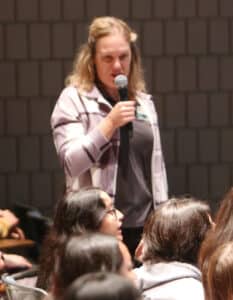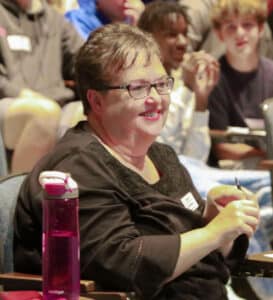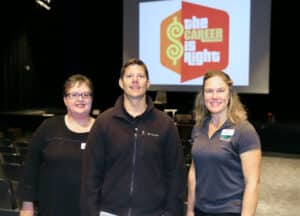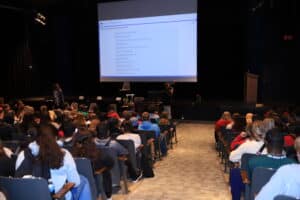SLAYTON, MN - High school and college students from Southwest Minnesota had the opportunity to learn about higher education and career opportunities on September 26th and 27th. The event hosted more than 2,400 students over the two days between the Minnesota West Campus in Worthington and Southwest Minnesota State University (SMSU) in Marshall. Hundreds of businesses, agencies, and education volunteers worked together to provide this opportunity.
The basis of the expo was to give the students a glimpse of the possibilities right here in Southwest Minnesota. Statistics show one out of five public high school graduates took jobs outside of the region of schooling and nearly one out of four did not have an employment record in Minnesota. For Southwest Minnesota that translates to 7% of the high school grads leaving the area. Greater Minnesota has lost a large share of grads to other regions or to other states. Without more people entering the labor force to replace those who leave, employers in Greater Minnesota will have to invest in labor-saving technologies, relocate to another region, or close.
SRDC’s Robin Weis and Kim Murphy joined Luke Greiner, Department of Employment and Economic Development to play ‘The Career is Right’. A slideshow of questions was presented to the students in each session, which represented three different schools, in the form of ‘The Price is Right’. A student from each of the three schools came to the front and as the multiple-choice questions were presented, each chose a letter to hold up representing their answer to the question. At the culmination of the session, the school with the most correct answers received a trophy.
At the beginning of the session, students were asked to complete a survey with one of the questions being which type of job they were most interested in. Health Sciences or Human Services was the top choice (28.2%) with Leisure & Hospitality & Tourism falling at the bottom (0.7%). The majority of the students relayed family was who should be helping them with their future education and career decisions. Likewise, they preferred to hear from people who work in different jobs to learn about potential career choices.
Greiner recently shared facts following the expo regarding the region which showed declines in basically every age cohort. Baby boomer cohorts have expanded but left a void in the younger population while millennial family formation showing up in the youngest cohort, is hardly enough to offset losses elsewhere.
His statistics show a decline of 3% from 2010-2022, but labor force numbers are down by 6.7% over the same period. A larger share of the labor force is 65+ in the region. The population is projected to decline by almost 9% by 2045 (13,662 fewer people). It is anticipated there will be nominal gains in 65+, but fewer people in every other age cohort. Additionally, the labor force will follow suit and is projected to drop by 5% by 2035 from a loss of 3,797 workers.
Southwest Minnesota K12 enrollment grew by +3.7% from 2012-2022 with 26,915 students. (see graph)
According to Greiner’s chart (2020-to 1st quarter of 2023) showing the various employment options, manufacturing has seen the biggest growth, jumping up 1,246 jobs. Whereas health care and social assistance fell -782. The only other careers seeing minimal growth were public administration, utilities, agriculture, forestry, fishing, and construction. Southwest Minnesota’s largest industry in 2022 suffering from job vacancies was food preparation and serving-related occupations (2,626). Next in line was production occupations (1,782) with life, physical, and social science occupations being the least affected at 69.
Greiner says the educational needs of the area’s workforce are driven mostly by business cycles (labor availability), not technology. In 2022, 69.7% of the available jobs (111,200) only required a high school diploma or less.
In the six regions (Twin Cities, Central, Northeast, Northwest, Southeast, Southwest) documented, the vast majority of students enrolling in higher education was a CTE (Career & Technical Education) participant. A big part of CTE funding has been directed towards establishing well-articulated course progressions – called Programs of Study – to strengthen the alignment between secondary and postsecondary CTE programs. In Southwest Minnesota, food manufacturing has the highest concentration at 6.4 with food and beverage sitting at the bottom at 1.3.
Region 8’s average median hourly wage was listed at $21.23 with those in management collecting the highest pay ($42.66). Food preparation & serving ($14.11) along with personal care & service ($15.68) sat at the bottom. Meanwhile, the State’s median average wage was listed at $24.25.
The expo was sponsored by the Southwest Minnesota Workforce Development Board along with the Southwest Initiative Foundation.




